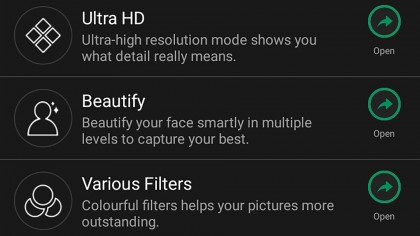Why you can trust TechRadar
The Oppo F1 is not the first phone to offer high-quality specs for well under £200 (US$300, AU$370). Its camera hardware is pretty adept too though.
It has a 13MP rear camera, using a Samsung ISOCELL sensor and an f/2.2 lens. This is a snapper that feels fast to shoot, which helps to make it fun to use.
The F1 even has phase detection autofocus, although that sense of zip is as much to do with the lack of any significant shutter lag.

Image quality is decent, but doesn't set any new standards. The Oppo F1 punches it out with the Motorola Moto G and OnePlus X as one of the better affordable phone cameras.
As you'd hope from a 13MP sensor, you get loads of detail when the lighting is good. My main issue with the phone is that it swings between making your photos look a bit under-optimised and over-optimised. Standard shots could do with a bit of extra dynamic range fiddling, but the HDR mode is so intense it doesn't look 100% natural.

I am a bit of a photo snob, though, and the image quality is perfectly respectable really.
Like any phone with an average-size sensor and no optical image stabilisation, the Oppo F1 starts to struggle in lower light. It doesn't get slow and painful to use, but the level of detail just isn't as good as from the more expensive stabilised phones, which can afford to use lower sensitivity levels.
Sign up for breaking news, reviews, opinion, top tech deals, and more.

There's a silver lining, though. The Oppo F1 has a pretty neat camera app that looks simple on the surface, but offers some fairly advanced extra modes. One of the more interesting ones is Slow Shutter, which enables you to use ultra-long exposures to reduce noise.
There's also Oppo's signature 51MP Ultra HD mode. This doesn't radically increase detail, but it can help to reduce noise a bit.
It's not actually the rear camera that's designed to stand out, though. The Oppo F1 has an 8MP front-facing camera with a 1/4-inch sensor and a super-fast f/2.0 lens. This is an unusually well-speced snapper for a sub-£200/$300 phone.

Selfies look about right even in pretty ropey indoor lighting, and are genuinely better than almost all other phone cameras at this price. Other cameras that sound similar on paper are much better, though. The Nexus 6P's front camera is far superior, which is no great surprise given that the phone is also more expensive.
With less light to work with the Oppo F1's selfies do start to appear a bit mushy in comparison – that's not always a bad thing in terms of being flattering to your fine lines and stray hairs, though, and the Oppo F1 also offers a face 'optimisation' filter like most phones these days.
Camera samples






Andrew is a freelance journalist and has been writing and editing for some of the UK's top tech and lifestyle publications including TrustedReviews, Stuff, T3, TechRadar, Lifehacker and others.
